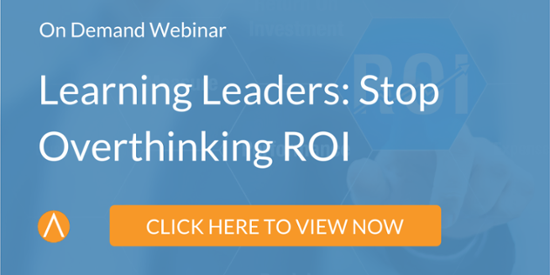Posted by Caveo Learning ● June 9, 2016
6 Questions for Learning Leaders to Solve Build vs. Buy Scenario
 Your organization has identified a need for learning surrounding a broad topic like on-the-job coaching or business acumen training. As a learning leader, your first inkling might be to just peruse the internet and sift through the many off-the-shelf offerings from dozens of training providers. But this approach comes with obvious, potentially crippling downsides.
Your organization has identified a need for learning surrounding a broad topic like on-the-job coaching or business acumen training. As a learning leader, your first inkling might be to just peruse the internet and sift through the many off-the-shelf offerings from dozens of training providers. But this approach comes with obvious, potentially crippling downsides.
This challenging question is known as the build vs. buy scenario, and it’s one that learning leaders deal with frequently. Should you go the easy route and purchase a ready-made learning product—one that will necessarily lack key specifics about your organization and industry—or build a customized training program that will meet your learning needs precisely, but which may be more time-consuming and expensive?
How should learning leaders weigh the pros and cons of such a straightforward transactional purchase with the larger, longer-term needs of the organization?
The first thing to keep in mind is that measuring return on investment is far more important than merely totaling the upfront cost; a customized solution that costs twice as much to build but which results in a workforce that is three times more efficient is likely a worthwhile expenditure. Making educated projections of training ROI is absolutely crucial to answering the build vs. buy question.
Here are 6 more questions that can help guide your build vs. buy decision.
How many learners need this course?
In many cases, more than 50 learners in a course starts to offset the licensing fees with regard to the cost of developing a custom course. For example, 50 learners taking a $500 course would give you $25,000 to build your own course.
How soon does the course need to be delivered?
Off-the-shelf courses can be deployed almost immediately, provided there are no technical difficulties in gaining access, or you don’t need to track it in your own learning management system.
Does the off-the-shelf course actually solve the learning need?
If you can’t find a course that fits well and is going to accomplish the business goals for the training, you could just be wasting your time and money, as well as diminishing your workers’ effectiveness. If the course is customizable from the provider, you need to find out how long it will take and how much it will cost, and then weigh the difference versus having a custom course developed.
Can you buy a license for unlimited use, or do you have to continue to pay for each learner as you add them?
These costs can escalate quickly if you have a high learner turnover rate. In most cases, creation of a custom course is considered work for hire, meaning you would then own the course and could use it for an unlimited audience of learners. If buying still makes sense, be sure to understand the terms, and don’t lock yourself into long-term agreements without asking about course maintenance, as content and technology can evolve relatively quickly.
Do you have the resources internally to build it?
While it may make more sense to build the course internally form a cost perspective, you should consider the true impact to your other projects if you choose to build it using exclusively internal resources.
Are there other ways to deliver a more custom experience to your learners?
Consider following up an off-the-shelf course with an activity, case study, or scenario that enables the learner to see how that topic applies to their specific industry, organization, and even job role.
All in all, it is not just a question of financial cost when it comes to making a build vs. buy decision.
Topics: Metrics & Measurement, Learning Strategy


